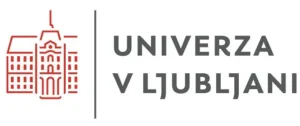1980–1984
Year 1980
As in previous years, there were five laboratories operating as part of the Department of Condensed Matter Physics:
- Nuclear Magnetic Resonance Laboratory,
- Electron paraMagnetic Resonance Laboratory,
- Laser Light Scattering Laboratory,
- Dielectric Spectroscopy Laboratory,
- Ultrasound Spectroscopy Laboratory.
As in the past, the Department also transfered its knowledge to other disciplines with the help of three applied research groups working in the Department:
- research group for the application of ferroelectrics,
- research group for the application of liquid crystals,
- research group for the utilization of NMR.
The research focused on the following areas:
- research in microscopic nature and lattice dynamics of incommensurate ferroelectrics and antiferroelectrics,
- research in ferroelastics,
- research in smectic liquid crystals,
- research in membrane biophysics,
- transfer of experience gained by basic research in condensed matter physics to applications in the fields of electronics, chemistry, medicine, agronomy and building industry.
In the framework of research on atomic, molecular and crystal stucture of condensed matter, it should be emphasised that the main focus of research moved from the study of ideal translationally periodic crystals to the study of disordered or partially disordered systems, where there is no long-range order in at least one dimension. These systems exhibit a number of interesting phenomena that cannot be found in ideal translationally periodic crystals, yet are interesting for applicative use. Smectic liquid crystals with long-range order in only on or two dimensions are one of such examples. They are joined by ferroelectrics with hydrogen bonds, where in high-temperature phase a dynamic disorder of protons between two possible positions in hydrogen bonds can be observed. A special case are incommensurate systems with long-range order but no translational periodicity, which means that these systems cannot be classified as one of the 230 crystallographic space groups.
In 1980, temperature dependence of soliton density in structurally incommensurate systems was measured for the first time. The results showed that the measured temperature dependence cannot be explained using the generally accepted theory, but rather using a model based on the assumption that the incommensurate phase is critical in its entirety and critical fluctuations must therefore be explicitly taken into account. The results showed that the dimensionality of incommensurate modulation is more important than lattice dimensionality.
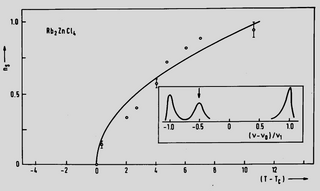
It is also worth mentioning that it was in this year that the phenomenon of the local pseudo freeze-out of lattice dynamics and spontaneous breaking of local symmetry in the paraelectric phase high above the transition temperature was noticed; this phenomenon was also quantitatively explained.
With the help of Brillouin scattering under high pressure, the thermodynamic theory of ferroelastic systems was quantitatively verified for the first time.
The theory of spin-lattice relaxation in incommensurate systems and in systems with unstable lattice vibration and central vibration was formulated.
In 1980, the local degree of ordering of ferroelectric dipoles in ferroelectric liquid crystals was determined with the help of 13C NMR.
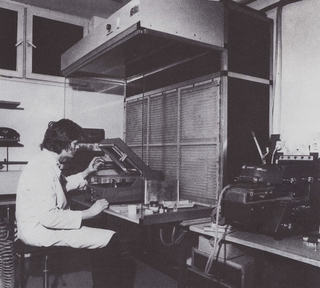
Two applied achievements stand out in this year, namely a new theory of cement hydration and a new method for determining the degree of cure of cement pastes. The researchers also made a matrix liquid-crystal screen and used the model of liquid-crystal oscilloscope with memory. In cooperation with the factory of Aero Celje, more than 150,000 liquid-crystal thermometers were made, enabling the penetration into foreign markets. The researchers also built a NMR oil analyser for the University of Campinas in Brazil. The making of an original infrared alarm detector, whose production was taken over by DO Varnost, also deserves to be mentioned.
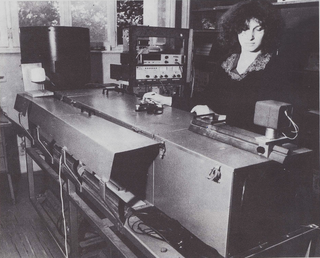
Year 1981
In 1981, there were five laboratories running in the Department of Condensed Matter Physics:
- Nuclear Magnetic Resonance Laboratory,
- Biophysics Laboratory,
- Laser Light Scattering Laboratory,
- Dielectric Spectroscopy Laboratory,
- Ultrasound Spectroscopy Laboratory.
There were three applied research groups working in the Department:
- research group for the application of ferroelectrics,
- research group for the application of liquid crystals,
- research group for the utilization of NMR.
The work was concentrated in the following areas:
- research in microscopic nature and dynamics of incommensurate ferroelectrics,
- research in ferroelastics,
- research in ferroelectric liquid crystals,
- research in discotic liquid crystals
- research in membrane biophysics,
- transfer of experience gained by basic research in condensed matter physics to applications in the fields of medicine, agronomy, building industry and electro-optics.
When talking about the basic research in condensed matter physics, it should be emphasised that the main focus of research moved from the study of ideal translationally periodic crystals to the study of disordered systems, in which there is no long-range order at least in one dimension. These systems exhibit a number of interesting phenomena, which cannot be found in ideal translationally periodic crystals, yet are interesting for applicative use. To this group belong the discotic and smectic liquid crystals, in which long-range order was only found in one or two dimensions, and ferroelectrics with hydrogen bonds, in which protons in high-temperature phase were dynamically disordered between the two possible positions in the hydrogen bonds. A special emphasis was put on the study of structurally incommensurate systems, where long‑range order did indeed exist, however, there was no translational periodicity of a crystal lattice, which meant that they could not be classified as one of the 230 crystallographic space groups.
Phase diagram of the chiral ferroelectric smectic liquid crystal DOBAMBC in an external magnetic field near a Lifshitz point between the smectic A, modulated smectic C* and homogeneously ordered smectic C phase was measured. This was the first discovery of a point in liquid crystals. The mentioned system was also important for application, as it enabled the construction of extremely rapid electro-optic display in perspective.
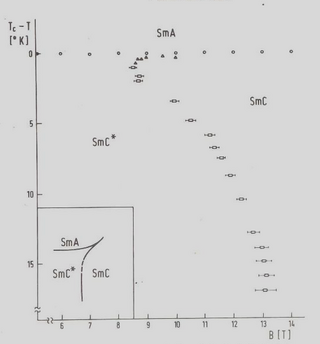
Using 13C NMR, molecular ordering in discotic liquid crystals, which were at the time a new and very poorly researched subtype of smectic liquid crystals, was determined for the first time.
Using EPR, the existence of local freeze-out of impurity dynamics in ferroelectrics was proven when impurities were coupled with a crystal lattice with forces of short range that are stronger than interactions in a pure crystal. The discovery was important for the dynamics of real systems since no ideal pure ferroelectrics exist in nature.
Research in which Brillouin laser light scattering was used showed that ferroelectrics under the influence of uniaxial pressure behave in the same way as ferroelectrics under the influence of an external electric field.
A new method was created on the basis of spin echo, which enabled measurement of low-frequency spectrum of the velocity autocorrelation function of molecules in liquid or gas phase.
Using the formalism of coherent averaging, the problem of two- and three-photon transitions induced by strong laser or radiofrequency radiation in a system with discrete energy levels was researched.
EPR research of milk tooth enamel samples showed that the alignment of microcrystals in it was smaller than in the samples of permanent enamel, which was in line with the data on higher prevalence of tooth decay in milk enamel.
The following applied achievements deserve a special mention for the year 1981:
- Laboratory model of an ultrasonic defectoscope was developed.
- Laboratory model of a LCD oscilloscope and a prototype of colour liquid-crystal indicator on the basis of “guest-host” effect was developed.
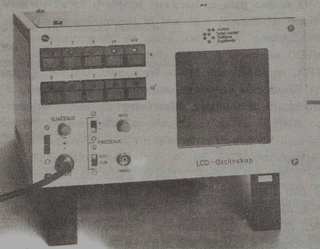
A fire detector on the basis of pyroelectric ceramics was constructed.
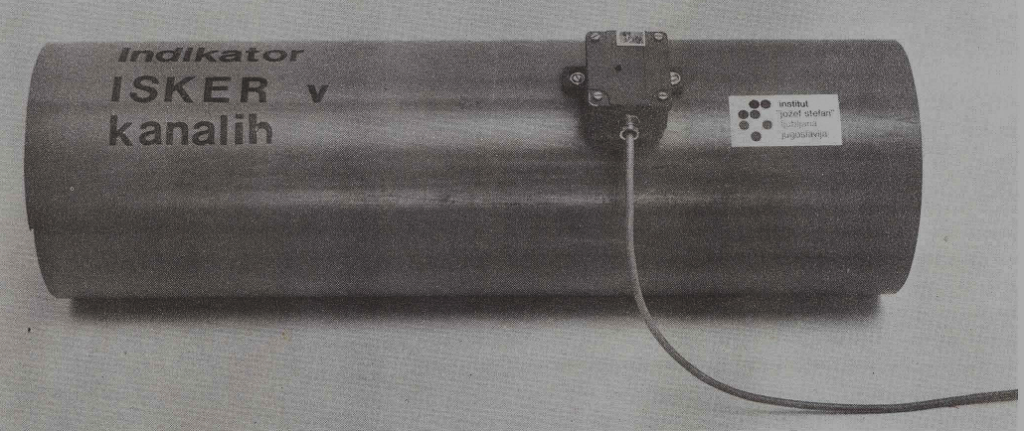
- Production line for liquid-crystal indicators was handed over to Iskra in Šentjernej.
NMR apparatus for studying cement hydrations was handed over to one of the then largest European manufacturers of cement additives from Zürich.
Year 1982
There were still five laboratories operating in the Department of Condensed Matter Physics:
- Nuclear Magnetic Resonance Laboratory,
- Biophysics Laboratory,
- Laser Light Scattering Laboratory,
- Dielectric Spectroscopy Laboratory,
- Ultrasound Spectroscopy Laboratory.
As in previous years, there were three applied research groups working in the Department in 1982:
- research group for the application of ferroelectrics,
- research group for the application of liquid crystals,
- research group for the utilization of NMR.
In this year, research was focused mostly on the partially disordered systems, which were unexplored until then. It was discovered that these systems are more common in nature than ideal crystals and can also be used in interesting ways.
In 1982, researchers were interested especially in the following:
- research in nature and dynamics of incommensurate and “classic” ferroelectrics,
- research in ferroelastics,
- research in liquid crystals, cholesteric and ferroelectric in particular,
- research in spin glasses,
- research in polymers,
- research in membrane biophysics,
- transfer of experience gained by basic research in condensed matter physics to applications in the fields of medicine, electro-optics, agronomy and building industry.
In the framework of research on incommensurate systems, the existence of a “supermovable” incommensurate phase was established, where the incommensurate modulation moves through the crystal without resistance.
The spectrum of elementary excitations in the multisoliton limit was measured for the first time.
Another discovery in 1982 was a new type of incommensurate phase transition, where the critical quantity is the amplitude of the incommensurate modulation and not the wave vector as was typical for ordinary incommensurate systems in the transition from the incommensurate to the commensurable phase.
Dielectric properties of the incommensurate systems Rb2ZnCl4 and (NH4)2BeF4 were researched experimentally and theoretically, and it turned out that the Landau theory well describes the course of the dielectric constant in the incommensurate phase, predicts the order of the transition and the validity of the Curie-Weiss law close to Tc.
In relation to research in ferroelectrics in 1982, a new model for proton tunnelling in KH2PO4 with short-range force being taken into account deserves a mention. This model supplemented the ordinary image of unstable lattice vibration and expressed the tunnel integral of H2PO4 group with the help of the tunnel integral of O-H–O bond and Slater energy parameters for different configurations of H2PO4 group.
An important achievement in 1982 was the first theory of spin glasses in ferroelectric‑antiferroelectric mixed systems with hydrogen bonds.
In the framework of research in liquid crystals, the measurements of diffusion in polyethylene solution yielded unexpected results. However, it was possible to explain them with the interconnection of polymer chains, which was shown at the long-time course of the velocity autocorrelation function.
Using the method of magnetic resonance, bound water in various biological samples was studied, and, among other things, the relation between moisture content and orientational ordering of the DNA helical axis sample was established. It should also be mentioned that the researchers constantly developped and improved the experimental method based on nuclear magnetic resonance. They produced a modification of INEPT and DEPT pulse sequences, introduced 17O nuclear magnetic resonance for protein content determination in grains and solutions and computerised the data of the already routine 1H NMR method for moisture and oil content determination in seeds, examined the possiblities for implementation of a new two-dimensional NMR spectroscopy, and theoretically covered the problems of body NMR imaging and representation of flow profiles for two methods, pulsed and continuous.
In order to improve experimental conditions for research with laser light scattering, analyses of optimum parameters of the Brillouin spectrometer and the Fabry-Pérot interferometer with multiple transitions considering account transition losses were carried out.
Research on molecular model in biophysics explained interactions of aggregated molecules with membranes and nonlinear behaviour of the distribution of amphiphilic molecules between the buffer solution and membrane. Researchers also studied the interaction of co‑carcinogenic substances with the erythrocyte membrane in order to explain the mechanism of the formation of tumour changes in cells, which occur via molecule bonding.
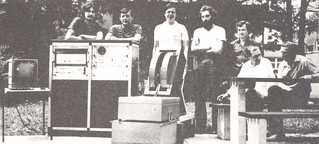
As in previous years, the Department produced applied research and collaborated with other, external clients. The researchers made an oscilloscope display on the basis of nematic liquid crystals, which was presented at the electronics fair in Ljubljana. They also made an NMR analyser of oil content in grains and delivered it to an institute of agriculture in China. In collaboration with Iskra, they constructed an ultrasonic defectoscope and produced alarm devices for the company Varnost.
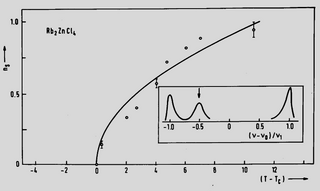
Year 1983
In 1983, there were still five laboratories operating in the Department of Condensed Matter Physics:
- Nuclear Magnetic Resonance Laboratory,
- Biophysics Laboratory,
- Laser Light Scattering Laboratory,
- Dielectric Spectroscopy Laboratory,
- Ultrasound Spectroscopy Laboratory.
As in previous years, there were three active applied research groups in the Department in 1983:
- research group for the application of ferroelectrics,
- research group for the application of liquid crystals,
- research group for the utilization of NMR.
In 1983, research focused predominantly on partially ordered condensed matter. They researched incommensurate crystals that showed perfect long-range order despite the fact that they did not have translational symmetry, and were therefore impossible to describe with any of the 230 space groups. The subject of the research were also liquid crystals, structural pseudo-spin glasses and polymer melts.
In addition to research on partially ordered condensed matter, the main focus of the work in 1981 encompassed two other areas: membrane biophysics and transfer of knowledge to application in the field of electro-optics, electronics, medicine, agronomy, and biotechnology.
In relation to research on incommensurate systems, two achievements should be mentioned:
- discovery of the existence of a chaotic phase between the incommensurate and commensurate phases,
- discovery of a thermal “unpinning“ of the modulation wave at high enough temperatures in the upper part of the incommensurate phase.
Research in ferroelectrics was carried out on the basis of research in pseudo-one-dimensional ferroelectrics CsH2PO4 and PbHPO4. Using nuclear quadrupole double resonance of the isotope 170, the existence of soliton excitations was proven in these ferroelectrics. Research on pseudo-one-dimensional monoclinic RbD2PO4 should be mentioned as well.

Withinh the research in liquid crystals in 1983, we should mention the determination of dielectric properties of ferroelectric liquid crystals in extremely strong magnetic fields, where a transition from the modulated to the homogeneous smectic C phase occurrs. The role of different relaxation mechanisms in the cholesteric liquid crystal COC was also determined for the first time.
In the framework of the development of new methods of magnetic resonance, the discovery of a new type of spin echo, where the multiquantum coherence of 13C-H spin pairs is used for selective precession refocusing in an inhomogeneous magnetic field, is worth noting. The researchers also measured heteronuclear scalar spin-spin constants using the polarisation transfer into the two-dimensional NMR. They developed a method for selective determination of long-range spin-spin constants, which were important for the NMR study of molecular conformation of biological molecules. W should also mention the first study of the Rayleigh-Bénard instabilities using measurement of velocity field with the method of spin echo and spin mapping – a paper on this first use of NMR zeugmatography in condensed matter physics provoked strong reactions at a specialised conference in Crete in 1983.
Among the chief applied achievements of 1983 is the construction of a digital microcomputer-controlled portable liquid-crystal oscilloscope with a multimeter. It was the first oscilloscope of this kind ever made and, as such, it attracted considerable attention at the INTERCAMA international exhibition in Düsseldorf.
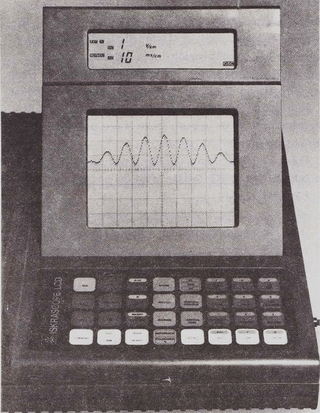
A new model of ultrasonic defectoscope was also constructed in 1983, as well as a computer-controlled NMR oil content analyser.
In the field of biophysics, the studies of biological membranes and interactions of biologically active molecules with membranes or membrane components are worth mentioning. They showed a connection between the structure of spin labeled phorbol esters and their analogues, as well as bonding capabilities of erythrocyte membranes, leukocyte membranes and model surfaces. In addition, the segmental mobility of albumin in a solution was measured and the areas where lipids bind to albumin were characterised.
Year 1984
In 1984, there were still five laboratories operating in the Department of Condensed Matter Physics:
- Nuclear Magnetic Resonance Laboratory,
- Biophysics Laboratory,
- Laser Light Scattering Laboratory,
- Dielectric Spectroscopy Laboratory,
- Ultrasound Spectroscopy Laboratory.
As in previous years, three applied research groups were active within the Department:
- research group for the application of ferroelectrics,
- research group for the application of liquid crystals,
- research group for the utilization of NMR.
In 1984, the research focused on incommensurate systems, two important achievements being the development of a new model for description of these systems and the development of a new method for determining very small band gaps in the spectrum of elementary excitations. Another discovery as far as incommensurate systems are concerned was a new NMR method for discriminating between actual incommensurate phases and commensurate systems with a very big unit cell. Lifshitz point was experimentally determined for the incommensurate RbH3(SeO3)2. Up until then, Lifshitz point was only determined for two systems: helicoidal magnetic structures and ferroelectric liquid crystals.
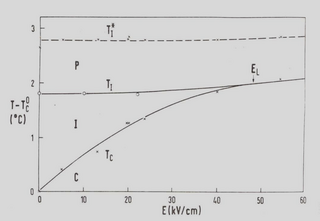
The EPR method was introduced to determine the dependence of solution density changes on temperature in incommensurate systems, and the critical exponent for the incommensurate wave amplitude in K2SeO4 was determined.
Among the studies of ferroelectrics and ferroelastics, the studies of proton glasses with application of nuclear magnetic resonance should be mentioned, as well as the development of a tunneling model for the needs of these studies. In addition, the studies of KH2AsO4 as a model system for order-disorder ferroelectrics showed that in the paraelectric phase, one has to deal with a continuous distribution of quasi-statically polarised bundles, the polarisation of which varies from 0 to ferroelectric polarisation. It is also worth mentioning the first measurement of self-diffusion of protons in a proton supraionic conductor (and ferroelectric) CsHSO4, which showed that protons in supraionic phase diffuse in crystals just as quickly as in water. Two soft acoustic oscillating modes with similar temperature dependences were also discovered in ferroelastic BiVO4 in LaNbO4.
The most important among the studies of liquid crystals are: the development of the theory of nuclear spin relaxation theory due to fluctuations of orientational order in the smectic-A phase of liquid crystals; the first measurement of self-diffusion tensor in cholesteric liquid crystals; the studies of orientational dynamic of micelles in nematic lyotropic liquid crystal using the Rayleigh scattering, which experimentally proves the similarity of the dynamics of thermotropic and lyotropic nematic liquid crystals; the explanation of temperature dependence of the helix pitch in ferroelectric liquid crystals by introducing new terms in the expression for density of free energy and the determination of temperature dependence of spontaneous polarisation, which was the first to show the breaking of Ps(T) near Tc.
As in the previous years, in 1984 the Department developed methods based on magnetic resonance, ultrasound and laser light scattering. A special mention should be made of the development of the time measuring method of determining self-diffusion, which showed that in many systems the diffusion constant is not a constant but is dependent on the diffusion time. New methods for determining molecular structure using 2-dimensional nuclear magnetic resonance 1H-13C were developed. The functioning of gradient coils, which were very important for the construction of the NMR tomograph, was calculated. In addition, the first NMR studies of dental tissue imaging were carried out. The EPR method was used to study dental cement. The reliability of determining oil quantity in seeds was improved with the development of a new computer program, which directed the operator towards the most reliable path and improved the data transparency. The Department patented the procedure for graphic depiction of spatial or areal distribution of speed of liquid flow with magnetic resonance. Another important achievement was the construction of an ultrasonic converter and of a measuring head for controlling the solidification of cement paste or concrete based on ultrasound.
In the domain of biophysics, the following results deserve to be mentioned: the researchers of the Biophysics Laboratory, in cooperation with the German center for cancer research, were the first in the world to synthesise a group of biologically active spin labeled phorbol esters; they developed a phenomenological model for describing the interactions of non-aggregated molecules, their aggregates and membranes in which the molecules are dissolving; they studied the transport of molecules in cells using electron paramagnetic resonance and the segmental movement of protein in buffer solution.
When talking about the interdisciplinary and the applied approach of the Department in 1984, the upgrade of the ISKRASKOP, a liquid-crystal based oscilloscope, must not be forgotten: it was newly equipped with a fast A / D convertor, the thickness of the display became very homogenous, which allowed for even contrast and colours, and a lithographic procedure for eliminating defects on the substrate was added.
The infrared detectors were also improved and the NMR tomography device was refined.
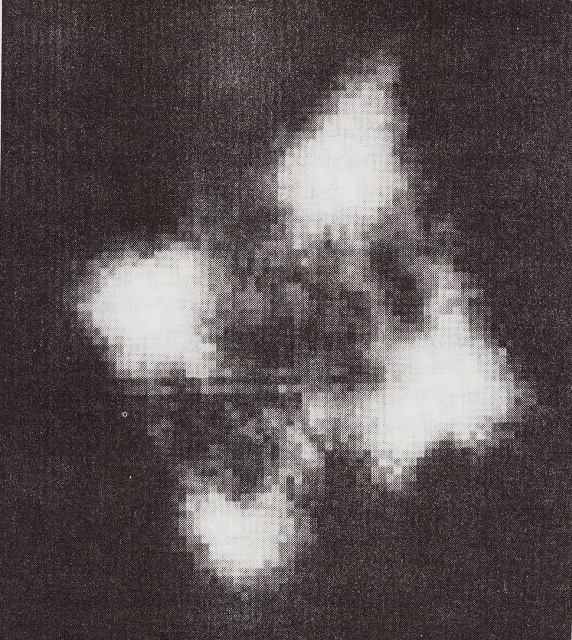
All the above mentioned studies involved international cooperation. Let us only mention a few of the institutions with which the Department for Condensed Matter Physics cooperated in 1984: Crystallography Institute of Moscow, Karl-Marx University of Leipzig, Demokritos Nuclear Institute of Athens, Kent State University, etc.
